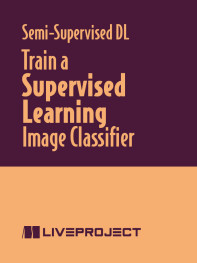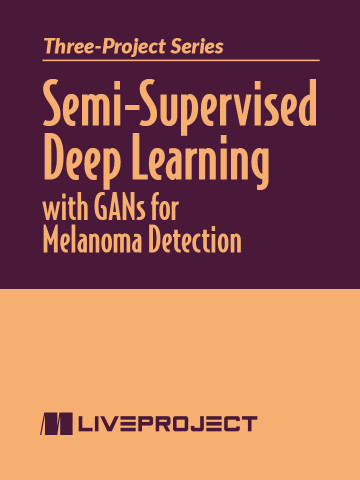- prerequisites
- intermediate Python • intermediate NumPy • beginner PyTorch • basics of deep learning and CNNs
- skills learned
- build an image classifier with deep CNNs • improve accuracy of a model with transfer learning • implement autoencoders to reconstruct images • train an unsupervised and semi-supervised GAN model
pro $24.99 per month
- access to all Manning books, MEAPs, liveVideos, liveProjects, and audiobooks!
- choose one free eBook per month to keep
- exclusive 50% discount on all purchases
- renews monthly, pause or cancel renewal anytime
lite $19.99 per month
- access to all Manning books, including MEAPs!
team
5, 10 or 20 seats+ for your team - learn more

In this liveProject series, you’ll take on the role of a computer vision engineer creating a proof of concept for an image recognition mobile app—one with world-changing potential. You’ll build a machine learning model that can identify cancerous moles in low-resolution photos from a phone’s camera. To produce the model, you’ll work through different supervised, unsupervised, and semi-supervised learning techniques, and use data augmentation to improve your training dataset. Each liveProject in this series covers a different deep learning approach for you to build a toolbox of skills that are most relevant to your career.
here's what's included




team
- five seats for your team
- access to all Manning books, MEAPs, liveVideos, liveProjects, and audiobooks!
- choose another free product every time you renew
- choose twelve free products per year
- exclusive 50% discount on all purchases
- renews monthly, pause or cancel renewal anytime
- renews annually, pause or cancel renewal anytime
-
![]() Semi-Supervised Deep Learning with GANs for Melanoma Detection project for free
Semi-Supervised Deep Learning with GANs for Melanoma Detection project for free
Prerequisites
This liveProject is for intermediate Python programmers with some machine learning experience. To begin this liveProject, you will need to be familiar with the following:
TOOLS
- Intermediate Python
- Basics of PIL
- Basics of Matplotlib
- Basics of NumPy
- Beginner PyTorch
 features
features
- Self-paced
- You choose the schedule and decide how much time to invest as you build your project.
- Project roadmap
- Each project is divided into several achievable steps.
- Get Help
- While within the liveProject platform, get help from fellow participants and even more help with paid sessions with our expert mentors.
- Compare with others
- For each step, compare your deliverable to the solutions by the author and other participants.
- book resources
- Get full access to select books for 90 days. Permanent access to excerpts from Manning products are also included, as well as references to other resources.


 Semi-Supervised Deep Learning with GANs for Melanoma Detection project for free
Semi-Supervised Deep Learning with GANs for Melanoma Detection project for free